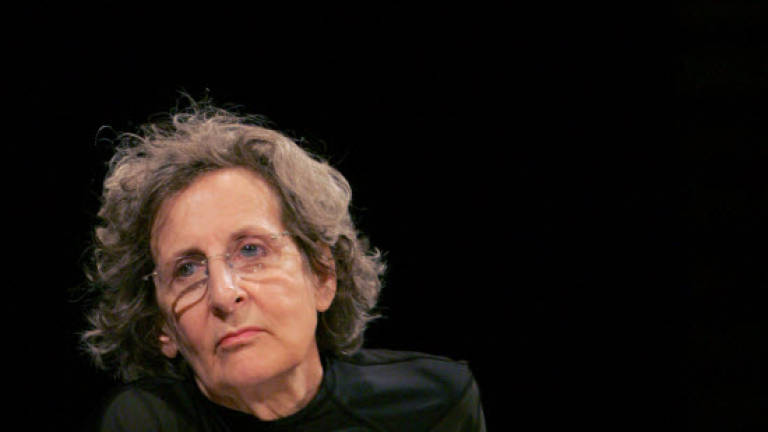Trisha Brown, choreographer who defied gravity, dies at 80

AMERICAN choreographer Trisha Brown, a pioneer of postmodern dance whose gravity-defying work shaped generations of creators, has died at the age of 80.
Her dance company confirmed Brown had died Saturday in San Antonio, Texas, after a lengthy illness. She had been treated for vascular dementia.
Brown withdrew from the stage five years ago after decades as a leading light of international dance, working mostly out of New York but also choreographing for the Paris Opera Ballet.
The Trisha Brown Dance Company paid tribute to "one of the most acclaimed and influential choreographers and dancers of her time" whose "groundbreaking work forever changed the landscape of art".
Brown, whose influences ranged from avant-garde music to molecular biology, shattered norms of dance starting in the 1960s.
From the beginnings of ballet, aspiring dancers were taught to be rigid models of beauty and expression – perching their backs up and holding their buttocks in.
Brown's dancers instead mastered motion, using harnesses and ropes as they challenged the concept of gravity and blurred the line between dance and visual art.
In the deceptively simple Man Walking Down the Side of a Building, a dancer goes out as if on a stroll but descends at a 90-degree angle from the rooftop.
Jamey Hampton, a friend and artistic director at BodyVox dance company in Portland, Oregon, recalled a similar piece as "wild, innovative, beguiling and somehow completely accessible".
In 1971's Roof Piece, 10 dancers appeared atop nearby buildings of New York's then gritty SoHo neighbourhood, improvising moves to which the next performer would respond.
Brown as a dancer showed a striking fluidity. Her most celebrated solo work was Water Motor, turned in 1978 into a short silent film.
She also incorporated objects from everyday life, such as spending hours on stage pushing a broom.
Radical from the mundane
"I make radical changes in a mundane way," she explained in a widely cited essay on the meaning of "pure movement".
"I also use quirky, personal gestures; things that have specific meaning to me, but probably appear abstract to others," she wrote.
Brown, in an interview with artists' magazine Bomb, said she believed in the value of improvisation and would incorporate apparent mistakes by dancers if they proved effective.
"I will do anything to get a good dance, invent new methods, employ trickery, endure experimentation – basically, I create new phrases on them or me or somewhere in between," she said.
Brown was heavily influenced by John Cage, a 20th-century giant of US experimental music who had torn apart the idea of neat compositions and introduced an element of chance, making his works more like nature.
Brown collaborated with artists, including the composer Laurie Anderson and painter Robert Rauschenberg, in an effort to create pieces that defied categorisation as dance, visual art or music.
But Brown for years also choreographed works that lacked music entirely – as well as other traditional elements such as plot and a clear setting.
Some of her most distinctive pieces are her "unstable molecular structure" works, in which she likened the dancers' movement to molecules under a microscope.
Dancing past 70
Born in Aberdeen, Washington, Brown graduated in 1958 from the Mills College in California, and arrived in New York three years later in search of new directions.
She became a founding member of the Judson Dance Theater, an influential collective of avant-garde performers, setting up her own company in 1970 and going on to create more than 100 dance works and six operas.
Brown herself danced past age 70, in 2007 performing in I love my robots, a collaboration with Anderson and Japanese artist Kenjiro Okazaki in which humans and robots interacted on stage.
Her final two choreographies came in 2011 – Les Yeux de l'ame (The Eyes of the Soul) and I'm going to toss my arms – if you catch them they're yours.
She had a particularly strong following in France.
Julien Bargeton, a deputy in the Paris mayor's office, tweeted of his "immense pain" on Brown's death, saying her shows "had fascinated me".
Dancer Aurelie Dupont, now the director of the Paris Opera Ballet, recalled showing her pointe work on her tiptoes when Brown composed 2004's O zlozony/O composite.
"She had never seen that in her life. She burst out laughing when I showed her all the possibilities," Dupont said. The piece, commissioned by the Paris Opera Ballet, went on to feature several pointe passages.
Brown's husband, the artist Burt Barr, died in November. Brown is survived by a son, four grandchildren, a brother and a sister. — AFP